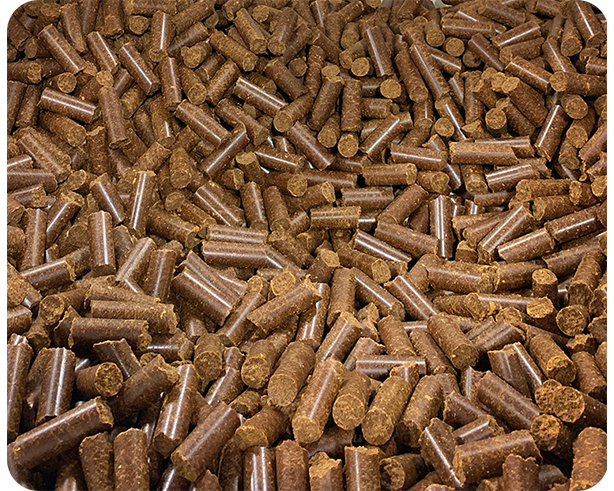Published by Mark Z. Johnson, Oklahoma State University Extension Beef Cattle Breeding Specialist
PART 1
From a nutritional standpoint, cattle basically need protein, energy, vitamins, minerals and water. Assuming free choice vitamin/mineral and water is in adequate supply, most nutritional supplementation and feeding focuses primarily on the crude protein (CP) and energy (TDN) needs of cattle. Furthermore, nutritional needs of cattle vary by age, size, stage of production, environmental conditions and weather, gender, breed and other factors (like level of milk production). In any nutritional program it is imperative to determine the objective of why we are feeding or supplementing. After defining our goal, we can minimize input costs and maximize our profit potential by evaluating feeds based on nutrient content as opposed to just looking at the price per ton or bag.
Evaluating Feeds on a Cost per Unit of Protein and Energy Basis
At the time of this writing, 38% CP, 70% TDN range cubes are available at a bulk price of $475/ton, the same commercial feed mill has 20% CP, 70% TDN cubes priced at $350/ton. Protein and TDN content are on an “As Fed” basis. If we are in a situation requiring protein supplementation of cows grazing warm season grass this fall, either of these protein supplements could meet our needs, but which is the more cost effective alternative? At a glance, $350/ton strikes most of us as a more cost effective feed. But what are we actually getting? Some “Cowboy Math” yields the following answers:
The 38% Cubes
At a cost of $475, one ton of 38% cubes contains 760 lbs. of CP and 1,400 lbs. of TDN:
For example: 2,000 lbs. x .38 = 760 lbs. and 2,000 x .70 = 1,400 lbs.
The cost per unit of CP is $.625/lb., the cost per unit of TDN is $.34/lb.
For example: $475/760 lbs. = $.625 and $475/1,400 lbs. = $.34
The 20% Cubes
At a cost of $350, one ton of 20% cubes contains 400 lbs. of CP and 1,400 lbs. of TDN:
For example: 2,000 lbs. x .20 = 400 lbs. and 2,000 x .70 = 1,400 lbs.
The cost per unit of CP is $.875/lb., the cost per unit of TDN is $.25/lb.
For example: $350/400 = $.875 and $350/1400 = $.25
So, we have determined the more cost effective source of CP is the 38% cubes and the more cost effective source of energy is the 20% cubes. What is the most cost effective feed? Depends on our nutritional objective. What we are we feeding/supplementing and why.
PART 2
Evaluating Money Saved When Purchasing Feed on Cost per Unit of Protein and Energy Basis
Last week we broke down the cost per unit of protein and energy in 20% and 38% percent range cubes at current prices. This week we evaluate the money saved when purchasing feed on the cost per unit of protein or energy in order to meet a specific nutritional objective. The bottom-line point of this article is working through an example to determine the most cost effective ration or supplement based on the feeding or supplementation objective.
The Scenario & Objective
We have 60 mature cows, average weight of 1,300 lbs., due to calve in January, entering the last trimester of pregnancy, cows are in a Body Condition Score (BCS) of 5.5. We have ample standing forage in the form of native grass which forage analysis indicates is 5% CP and 55% TDN. On grass of this type, cows should consume 1.9 – 2.0% of their body weight resulting in forage dry matter consumption of 25 lbs./day. Knowing that reproductive efficiency is highly correlated to nutrition, our objective is for cows to maintain current weight and BCS until calving.
These cows will need 1.84 lbs. of CP and 13.3 lbs. of TDN per day over the next 100 days.
If possible we would like to maintain cows by utilizing the standing forage. Can this be done?
25 lbs. Forage DM intake x .05 CP = 1.25 lbs./day CP intake.
1.84 lbs. CP required – 1.25 lbs. from the forage equals a daily CP deficiency of .59 lbs./day.
25 lbs. Forage DM intake x .55 TDN = 13.75 lbs./day TDN intake. There is no energy deficiency.
We have identified a supplemental need for protein. Research have consistently shown that protein supplementation is extremely effective for cattle grazing protein-deficient forage. In fact, energy supplementation will not be effective if dietary protein is deficient.
Now the questions is: Which of the two protein supplements evaluated can most cost effectively meet our goal? The 20% CP range cubes at $350/ton or the 38% range cubes at $475/ton.
It would take 3 lbs./day of the 20% cubes to meet the CP requirement. For example: .59 lb. CP deficiency/.20 CP content = 3 lbs. We previously determined the cost per unit of CP in the 20% range cubes to be $.875. Taking the .59 lb. CP deficiency x $.875 = $.52/day cost with 20% cubes to meet CP needs. This daily cost x 100 days of supplementation x 60 cows equals an expense of $3,120.
It would take 1.58 lbs./day of the 38% cubes to meet the CP requirement. For example: .59 CP deficiency/.38 CP content = 1.58. We previously determined the cost per unit of CP in the 38% range cubes to be $.625. Taking the .59 lb. CP deficiency x $.625 = $.37/day cost to supplement the cows with 38% cubes to meet their CP needs. This daily cost x 100 days of supplementation x 60 cows equals an expense of $2,220.
Supplementing the 38% range cubes purchased at a cost of $475/ton instead of the 20% cubes at a lower price per ton resulted in a savings of approximately $900 to supplement the 60 cows for 100 days.
Unnecessary supplementation increases feed cost without real benefit. The goal of supplementation is to feed just enough of the right supplement to optimize the overall diet. Determining the most cost effective means of supplementing cows requires the evaluation of feeds on a cost per unit of protein and energy provided. Can you afford not to?
Computer software, such as OSU Cowculator program, can better pinpoint an animal’s nutrient requirement at a specific time and in a specific stage of production. These and other useful tools can be found at beefextension.com.
References
Beef Cattle Manual. Eight Edition. E-913. Oklahoma Cooperative Extension. Chapters 16 and 17.


